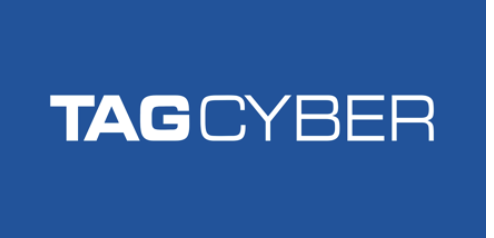Table of Contents
Share this entry


TAG Cyber and Sonrai Security have partnered to share a perspective on securing your cloud and your most critical business assets. The rapid adoption of cloud computing has brought about a new era of convenience and flexibility for organizations. However, with these benefits come new security challenges. In this blog post, we will discuss four critical steps to securing your cloud environment: understanding real risk, managing shared credentials and least privilege, assessing vulnerability risk in relation to access and identities, and establishing monitoring and alerting systems for effective incident response. Following these steps, you can create a robust security framework for your cloud infrastructure.
Step 1: Understanding Real Risk – The Intersection of Identity, Mismanagement, Data Storage, and Workload Vulnerabilities
Identity management plays a critical role in securing your cloud environment. Ensuring that only authorized users have access to specific resources is essential to prevent data leaks or unauthorized access. By ensuring the appropriate levels of authorization and trust are applied across the workloads and data stores, we can substantially limit the blast radius of potential systemic vulnerabilities. In addition, implementing strong authentication and access control mechanisms, such as multi-factor authentication and role-based access control, can significantly reduce the risk of unauthorized access and disclosure of sensitive data elements
To effectively secure your cloud environment, it is crucial to understand the real risks involved. This requires considering the intersection of identity management, environment mismanagement, data storage, and workload vulnerabilities within your cloud environment. Workload vulnerabilities refer to the potential security flaws within your cloud applications and services. Identifying these vulnerabilities is essential to prevent unauthorized access or data breaches. In addition, regular vulnerability assessments and penetration testing can help you uncover these risks and take appropriate measures to mitigate them.
Environment mismanagement of cloud resources can lead to security risks, such as data breaches or unauthorized access. This may involve failing to properly configure security settings, neglecting to apply security patches or inadequately monitoring cloud activities. Reviewing your cloud configurations and staying informed about best practices can help avoid mismanagement risks.
Data storage in the cloud is a significant security concern. Ensuring that your data is securely stored and encrypted at rest and in transit is critical to prevent unauthorized access or data leaks. Additionally, consider implementing data classification and data loss prevention (DLP) policies to protect your high-value assets better.
Step 2: Understanding Shared Credentials and Least Privilege Across the Environment
Shared credentials, shared trust, and least privilege are three key elements that must be managed in order to minimize the risks to any cloud environment. For the most part, least privilege is typically managed by Privileged Access Management (PAM) solutions much as it has been historically. However, when we look at how shared credentials and shared trust propagate through a cloud environment, it becomes obvious as to how the rick grows almost exponentially.
In most DevOps shops, the developers have full reign as to how to configure and build the entire environment. They are basically given full ‘administrative’ rights to add packages, reconfigure services, or adjust systemic trust as they need to. While this authority is a fundamental necessity within the developer’s environment, aka the sandbox, it has also been tied to numerous, high-visibility breaches over the past several years.
In many cases, in order to expedite the development process, trust relationships are created to ensure that all of the necessary resources are available during the development lifecycle. These cross-workload trust relationships ensure that data elements, API calls, and other various resources can be accessed by any application without overburdening the development team with finding/requesting/maintaining approved credentials.
Unfortunately, these same over-authorized users, as well as the abused system trust relationships, frequently are included within the build process, ensuring the replication of highly risky authentication and authorization practices are deployed to production. And, while the credential risk is significant enough, the fact that now every person and device within the sandbox is now inherently trusted within the production environment, categorically elevates the risk substantially.
Step 3: Understanding Vulnerability Risk in Relation to Access and Identities and the Blast Radius
A key aspect of cloud security is understanding the vulnerability risk with access and identities. This involves assessing the potential impact or “blast radius” if a vulnerability is exploited and how excessive access permissions can broaden the impact of the vulnerability. The blast radius refers to the extent of damage that can be caused by a successful attack, taking into account the access and privileges of compromised users or services.
To minimize the blast radius, consider segmenting your cloud environment and isolating critical assets from less sensitive ones. For example, implementing network segmentation and micro-segmentation can help restrict lateral movement and limit the potential damage caused by an attacker.
However, while implementing these Standards of Good Practice is fundamental, the key to minimizing the blast radius for most cloud implementations is by reducing access down to the most minimally effective levels and removing any excessive trust inheritance cases. Monitoring and analyzing user behavior and assigned permissions is a critical capability in detecting anomalies and effectively minimizing the blast radius.
Step 4: Monitoring and Alerting the Environment and Incident Response Practices
Effective monitoring and alerting are vital components of a secure cloud environment. By establishing a comprehensive monitoring and alerting system, you can quickly detect security incidents, identify potential threats, and respond promptly. To set up a robust monitoring system, consider the following best practices:
- Centralize log collection and analysis: Collecting logs from various sources across your cloud environment and analyzing them in a centralized platform can help you identify suspicious activities, trends, and potential security incidents. In addition, employing tools like Security Information and Event Management (SIEM) systems or cloud-native monitoring services can significantly enhance your visibility and threat detection capabilities.
- Implement real-time alerting: Configure alerts for specific events or anomalies indicating a security breach or an unauthorized access attempt. Real-time alerting allows you to respond to potential threats quickly and minimize their impact on your environment.
- Regularly review and update your monitoring and alerting policies: As your cloud environment evolves, it is essential to review and update your monitoring and alerting policies accordingly. This ensures that your security monitoring remains effective and relevant to the current state of your infrastructure.
In addition to monitoring and alerting, having a well-defined incident response plan is crucial for addressing security incidents in your cloud environment. A comprehensive incident response plan should include the following:
- Roles and responsibilities: Clearly define the roles and responsibilities of your incident response team members, ensuring that everyone understands their duties during an incident.
- Communication channels: Establish secure communication channels to coordinate incident response efforts and keep stakeholders informed.
- Incident classification and prioritization: Develop criteria for classifying and prioritizing security incidents based on their potential impact on your organization and resources.
- Incident response procedures: Document the steps and procedures to be followed during a security incident, including containment, investigation, remediation, and recovery.
- Post-incident review and lessons learned: Conduct a thorough review of the incident response process after each security incident, identifying areas for improvement and updating your plan accordingly.
Action Plan for the Enterprise
Securing your cloud environment is a critical responsibility for organizations that rely on cloud computing. By understanding real risk, managing shared credentials, and uncovering least privilege risks, assessing the vulnerability blast radius with access and identities, and implementing effective monitoring and alerting systems, you can create a strong security posture for your cloud infrastructure. In addition, regularly reviewing and updating your security practices and staying informed about emerging threats and best practices will ensure your cloud environment remains secure and resilient against potential attacks.
The Sonrai Cloud Security platform can provide these key insights by performing in-depth identity and trust analysis, providing a deep understanding of how access control issues can expand the overall blast radius of the vulnerabilities within your workloads. The Sonrai Identity Graph provides clear visibility as to which credentials are of the highest risk, and overlays that insight into the vulnerabilities identified within the environment, providing a clear risk score and unique insight into the environment’s overall risk.
About TAG Cyber
TAG Cyber is a trusted cyber security research analyst firm, providing unbiased industry insights and recommendations to security solution providers and Fortune 100 enterprises. Founded in 2016 by Dr. Edward Amoroso, former SVP/CSO of AT&T, the company bucks the trend of pay-for-play research by offering in-depth research, market analysis, consulting, and personalized content based on hundreds of engagements with clients and non-clients alike—all from a former practitioner perspective.
Copyright © 2023 TAG Cyber LLC. This report may not be reproduced, distributed, or shared without TAG Cyber’s written permission. The material in this report is comprised of the opinions of the TAG Cyber analysts and is not to be interpreted as consisting of factual assertions. All warranties regarding the correctness, usefulness, accuracy, or completeness of this report are disclaimed herein.



